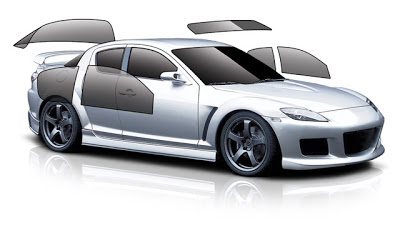Dyed, Metalized, Hybrid and Ceramic Window Film. What’s Best?
Each of the four types of window tint film is named because of the primary component used to protect you and your car. With so many options, which do you choose?
There are a lot of benefits to using window tinting; glare reduction, heat protection, fade protection, U.V. protection, safety, aesthetics, privacy. You will have to decide, what you are wanting your window tint to do. Window tinting is simply adding a layer of UV treated optical grade polyester film. That film can be manufactured in several ways, not just in the components mentioned in this article, but more specifically how it is made.
Dyed Film
Metalized Film
This film is a good product for customers that desire crisp appearance, heat reduction, glare reduction, fade protection, and UV protection. Metalized window film are either all metal or have a single layer of ceramics. Metalized window tinting is very good at reducing heat and reflecting UV rays. However, they are very shiny and can cause interference with radio, GPS, TPMS (Tire Pressure Monitoring System) sensors, and cell phones. Its shade and color are mainly determined by the type of metal used to make it. Metalized window film’s purpose is to reflect. These are rarely used anymore after the introduction of the TPMS.
Hybrid Film
Hybrid films use a combination of a dyed layer as well as a metalized layer. Using Hybrid window tint offers the best of both worlds. A metal layer is used for its reflective qualities and a dyed layer is used for its absorptive qualities. Because not a lot of metal is used by some manufacturers, these are the best bang for the buck as they don’t block any of the signals the 100% metalized films do.
Ceramic Film
The fourth and final type of window tinting is ceramic. Absorbing twice as much heat as dyed or hybrid films, it is considered to be the most technologically advanced type of window tinting. It is capable of high heat absorption at relatively light shades. It is definitely the ultimate in heat reduction; however, the cost is almost twice that of Hybrid films. This film is optimal for customers desiring a highly durable material, with excellent clarity, and providing superior heat reduction versus other film choices.
It’s easy to think that all lifetime warranty films are alike. Many get caught up in the trap of comparing pricing rather than the film quality. Be careful. Some companies may install the dyed film rather than the hybrid, selling it at a lower price but actually making a higher profit. Also, note thicker film may take up to weeks longer to dry out than other film choices. Ultimately, it comes down to the purpose for getting your windows tinted

